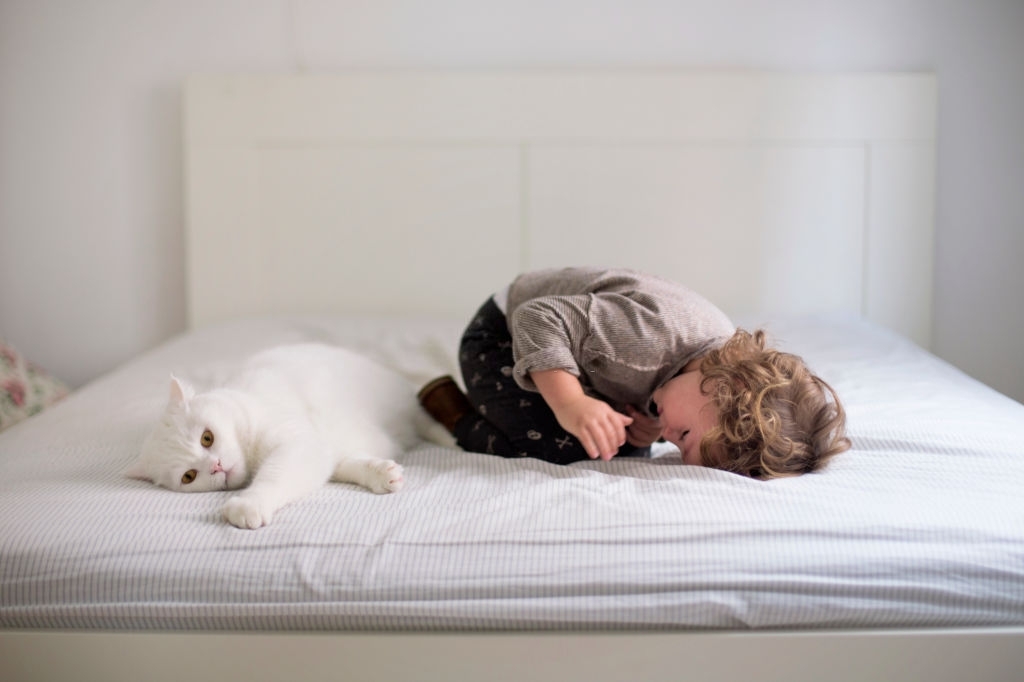Kids may flap their hands or arms when they are excited, or when they are feeling threatened, or perhaps as a sign of affection.
It occurs in both boys and girls. Flapping is one way that babies communicate with others around them to get attention from caregivers (parents) and other people who can help out the baby during difficult times like hunger pangs, teething pain etc.
Is baby hand flapping normal ?
Some autistic kids might flap their arms.
Autistic children have trouble deciphering and regulating their emotions.
They’re oversensitive to touch. Their brains are wired in a way that they can interpret the tiny movements of their bodies as meaning something significant. This causes them to feel trapped, trapped inside their own bodies.
Baby arm flapping might definitely be a symptom of autism but in many cases it’s not abnormal and it’s not indicative of a “problem” with your child.
At what age is hand flapping a concern ?
When toddlers are beginning to develop a sense of self and are starting to talk, arm flapping (and other ticklish activities) is a normal stage in childhood development.
However, parents should be careful about when and how much their child flaps his or her arms. If the child does it excessively, it might not be normal.
What are early signs of autism in infants?

Early signs of autism to be aware of are : delayed speech and language development or motor clumsiness. These symptoms are often accompanied by repetitive behaviors like hand-flapping, eye contact difficulties, and a lack of understanding of social cues.
What are autistic babies like ?
Autistic babies are often very sensitive to noise and light, and may have a hard time adapting to new surroundings.
They don’t quite fit in with their peers and are often picked on for it. They may hurt themselves without realizing it because of this behavioral issue.
How can parents identify if their baby is autistic ?
Parents can determine whether or not their baby is on the autism spectrum by observing the mannerisms, or behaviors exhibited by their child.
These characteristics include hand flapping (often in response to other people or objects), getting upset at loud noises, difficult sleeping patterns, and overreacting to touch.
Can babies hand flap and not have autism?
Yes, as long as they are not displaying behaviors that are not typical of an infant (like excessive hand flapping). These indicators include sleep disturbances, sensory issues, and developmentally inappropriate behaviors.
Hand flapping is a common issue in babies. Does this mean the baby is autistic?
It doesn’t mean that the baby has autism but it definitely warrants attention and evaluation. Hand flapping could be part of an underlying neurological problem but also can be a symptom of autism. Also, if your baby’s hand-flapping becomes more disorganized over time , it could represent a developmental delay.
Is arm flapping when the kid is excited normal?
It is not just children with autism who exhibit a hand flapping behavior. Hand flapping can be exhibited by children without Autism as well.
It is an involuntary movement that occurs when the person’s nervous system becomes over stimulated, such as during periods of stress or anxiety, and it helps relieve some of this tension.
How do I stop my toddler from hand flapping?
The strategies below can be used to decrease hand flapping . They will all take time, effort, and consistency. Do not give up if your child does not seem to be improving, but continue to provide him with more opportunities for interactive play.
Your child’s hand flapping should decrease in intensity over time as he becomes more comfortable.
What can I do at home?
Provide plenty of opportunities for interaction with other people and objects both inside and outside of the house.
This can be accomplished by providing a variety of toys that encourage communication, interacting with your child on a daily basis, reading books together, playing pretend games (like Cowboys and Indians) or music, etc.
Also spend lots of one-on-one time with your baby when he/she is older; this will help them develop relationships with you as their primary “social keeper”.
Reduce the amount of time spent in stimulating environments (which can often include loud noises like vacuums, power sanders etc.).
Why does my baby rotate her wrists ?
Rotating the wrist is common in babies. The child may not flail, he may just rotate the hands back and forth.
Are there signs of autism?Yes, if from the limited observations that you have made your child exhibits some of the following signs:
- Decreased eye contact and does not look at your face when you are looking at him;
- Lack of interest in making or following eye contact;
- Repetitive hand flapping (as noted above).
What does stimming look like in babies?
The word stimming is a term used by psychologists and psychiatrists to describe the behavior of people with autism spectrum disorder (ASD) who engage in repetitive movements or noises as a way for them to calm themselves down when they feel overwhelmed. The most common example is flapping one’s hands.
Conclusion
Arm flapping in babies is in most cases common and normal.
It can become a problem if the behavior continues at a high level or if it interferes with the normal development of the infant such as causing them to be hyperactive or showing other signs of autism spectrum disorder.
Reference:
Research on Autism Spectrum Disorder.

